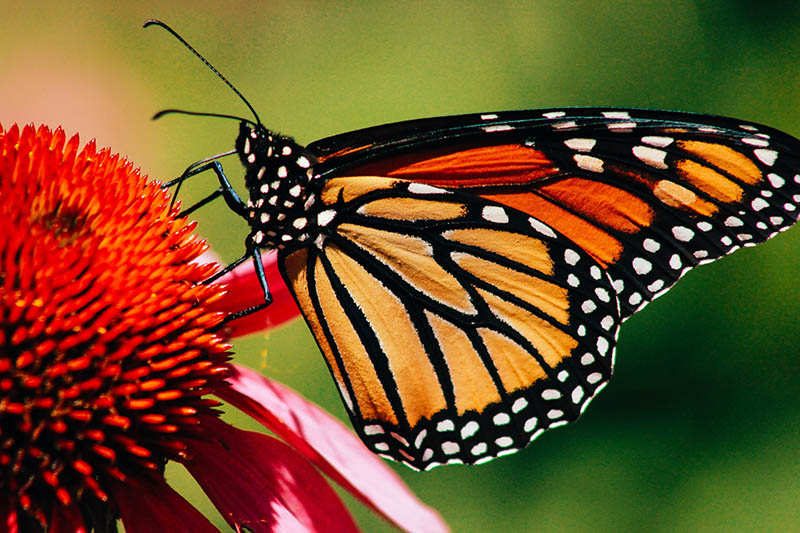What Is the State Insect of Alabama? How Was It Decided?
-
Misty Layne
- Last updated:

You’re familiar with how states designate state flowers and trees, but did you know most states designate a lot more as state symbols? These include state animals, state birds, state reptiles, state rocks, state gemstones, and state insects. If you’re from Alabama, you may not have realized that this state has a state insect.
What is the state insect of Alabama? The Monarch Butterfly! And how was it decided? Settle in, and we’ll tell you all about when this insect was designated as the state symbol and let you in on some facts about the Monarch you may not have known.
Why the Monarch Butterfly?
The Monarch Butterfly was designated as the state insect of Alabama in 1989. Most likely, this insect was chosen due to it being the most widespread and popular butterfly in the United States. In fact, the Monarch is so popular that seven states have chosen it as a symbol!
However, that’s not the only insect the state of Alabama honors. The mascot of Alabama (yes, the state has a mascot) is also a butterfly—the Eastern Tiger Swallowtail! It, too, became official in 1989, though in this case, the impetus was the city of Selma which had dubbed itself “The Butterfly Capital of Alabama” a few years prior in 1982.
But that’s not all! Alabama also has a state agricultural insect—the Queen honeybee. This designation came much later, in 2015, to honor the role honeybees play in agriculture.

A Few Facts About the Monarch Butterfly
The Monarch might be the most popular butterfly in America, but there are probably still a few things you don’t know about it. Below are a few facts about this beautiful insect!
- They’re migratory. Monarchs migrate every year—sometimes up to 3,000 miles away! Though these butterflies can fly 50–100 miles each day, the majority of butterflies don’t live to see the entire migration from beginning to end. Instead, the Monarchs that make it to the end destination are a different generation from the ones that started, sometimes up to four generations away from the original butterflies! That means these butterflies mate the entire trip. Luckily, the migration is done in large groups, so mating isn’t difficult.
- Migration is done for a reason. And that reason is milkweed. The Monarch caterpillars feed exclusively on milkweed, so the adults need to find a place that has plenty of it before they can lay their eggs. Because milkweed makes up the caterpillars’ diet, the butterflies are sometimes referred to as “milkweed butterflies”.
- They’re poisonous. Not to humans, though, only to predators that want to eat them. And the reason Monarchs are poisonous? It’s due to the milkweed they consume as caterpillars.
- They can taste with their feet. Imagining tasting things with your feet is quite odd, but the Monarch Butterfly has sensors in the feet that allow them to taste and identify something before they decide to eat it.
- They’re endangered. The Monarch population has been declining for a while now—since 1997—but they were put on the IUCN Red List of Threatened Species list as Endangered in July 2022.

Final Thoughts
Alabama has a state insect, and it’s the Monarch Butterfly. The state also honors two other insects—the Queen honeybee and the Eastern Tiger Swallowtail. It’s no surprise that the Monarch Butterfly is honored, though, as it is the most popular butterfly in the United States. Unfortunately, though, this butterfly species is endangered and pushing it closer to extinction.
See also:
- What is the State Insect of Kansas? How was it Decided?
- What is the State Insect of Ohio? How Was it Decided?
Featured Image Credit: gyulche1, Pixabay
